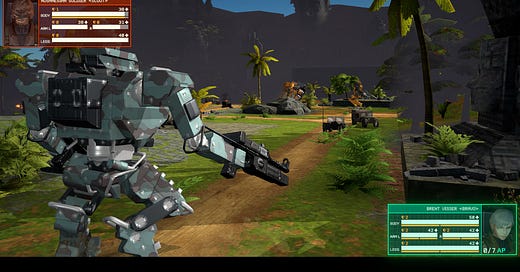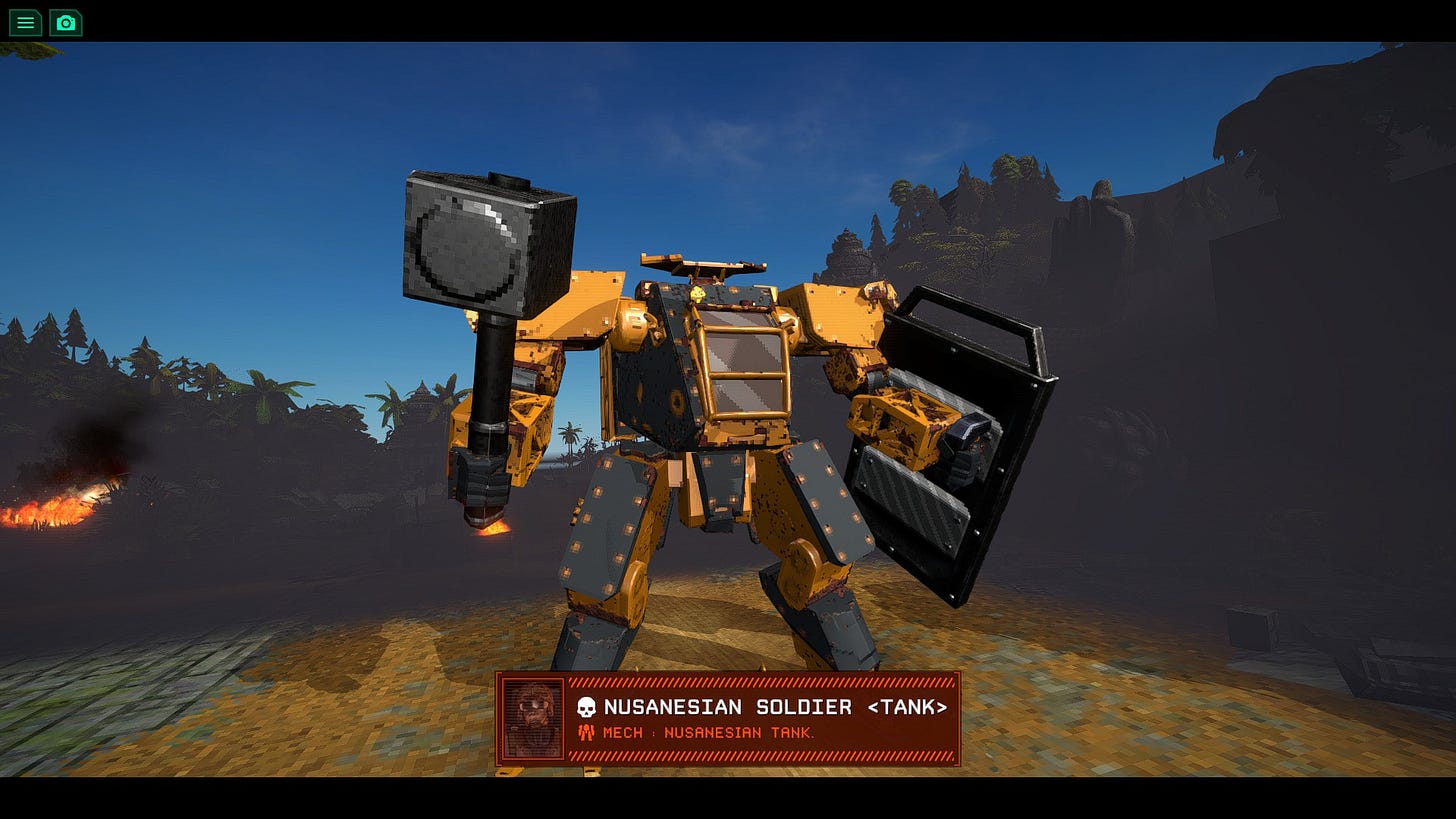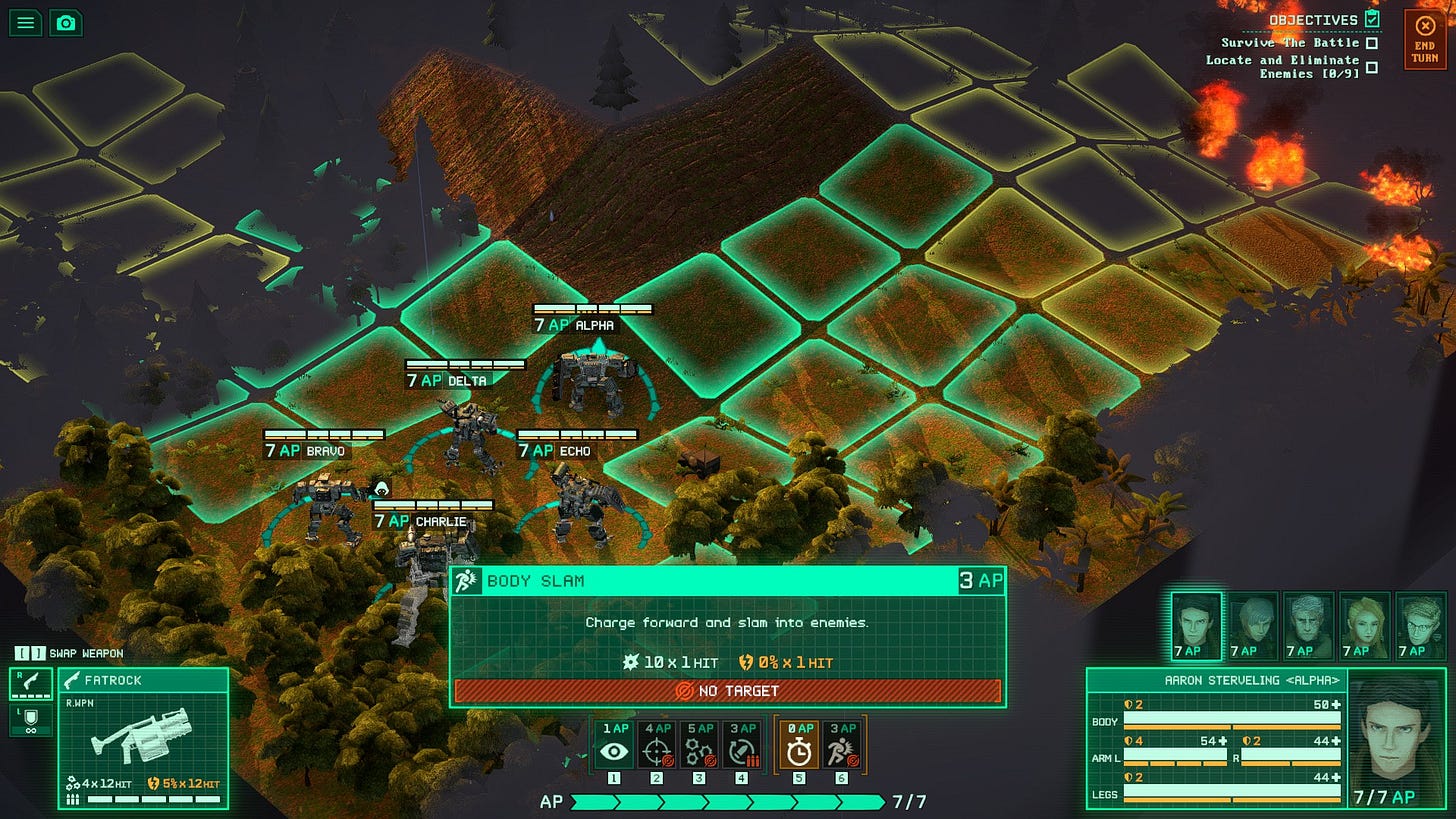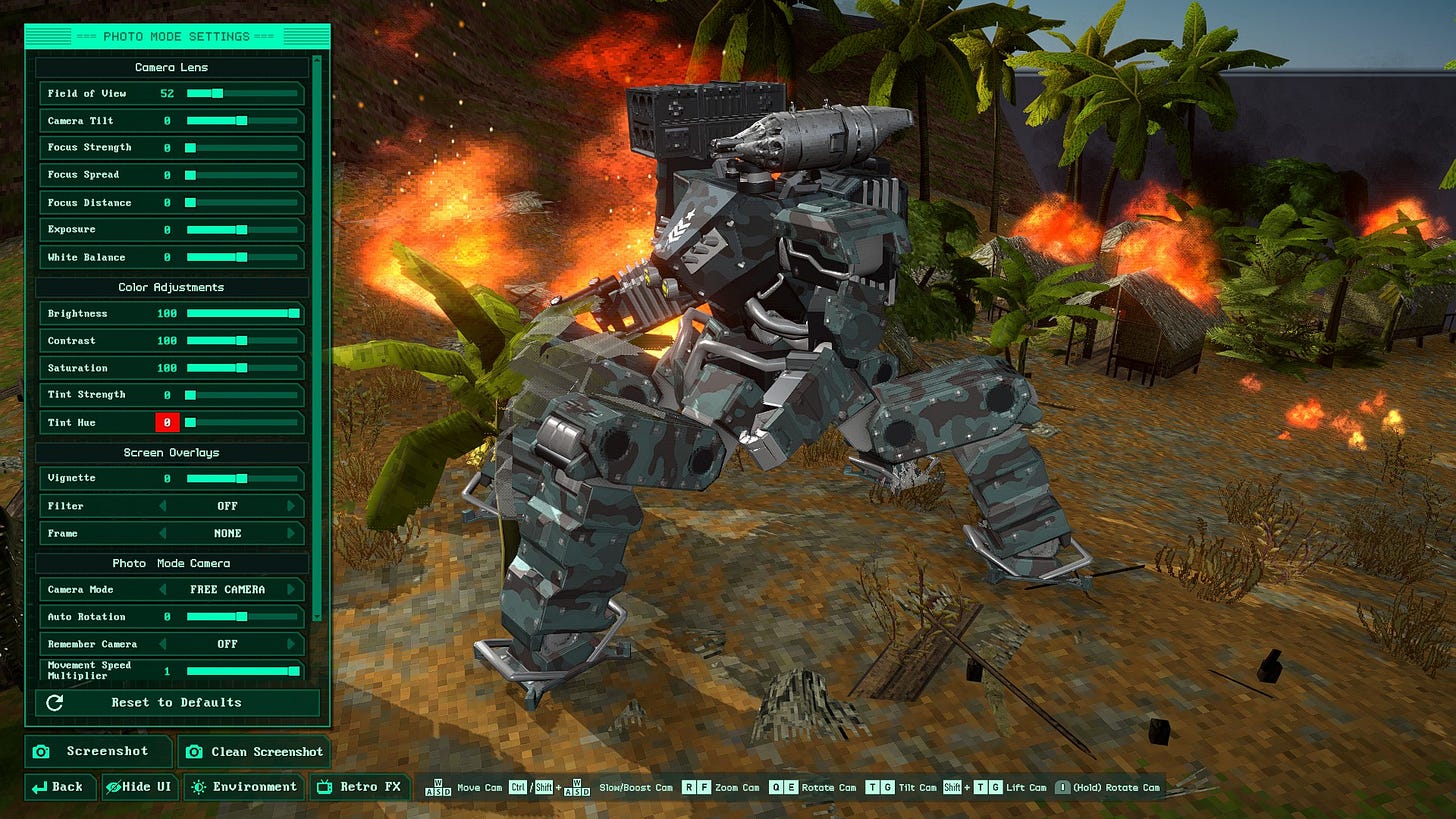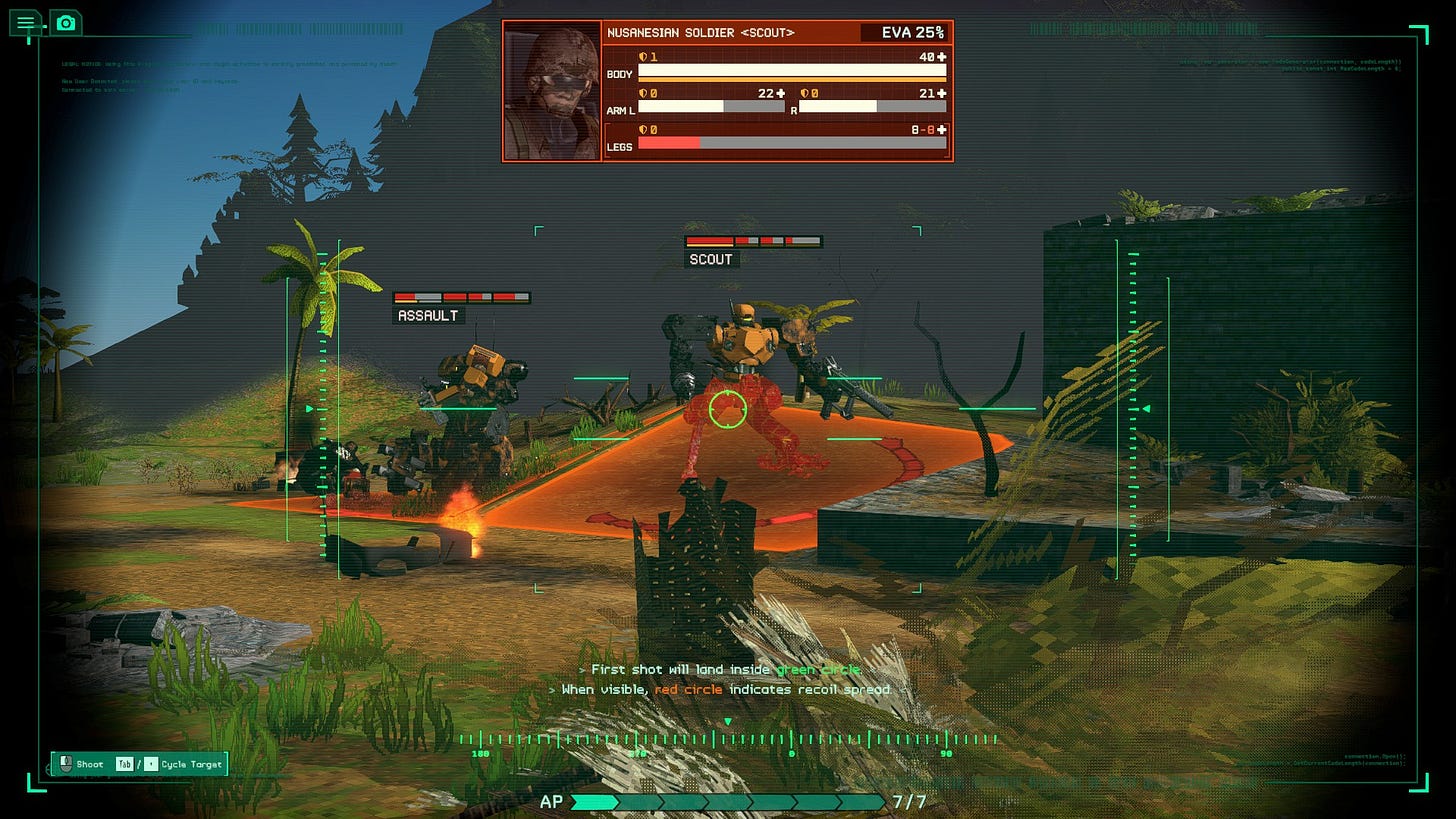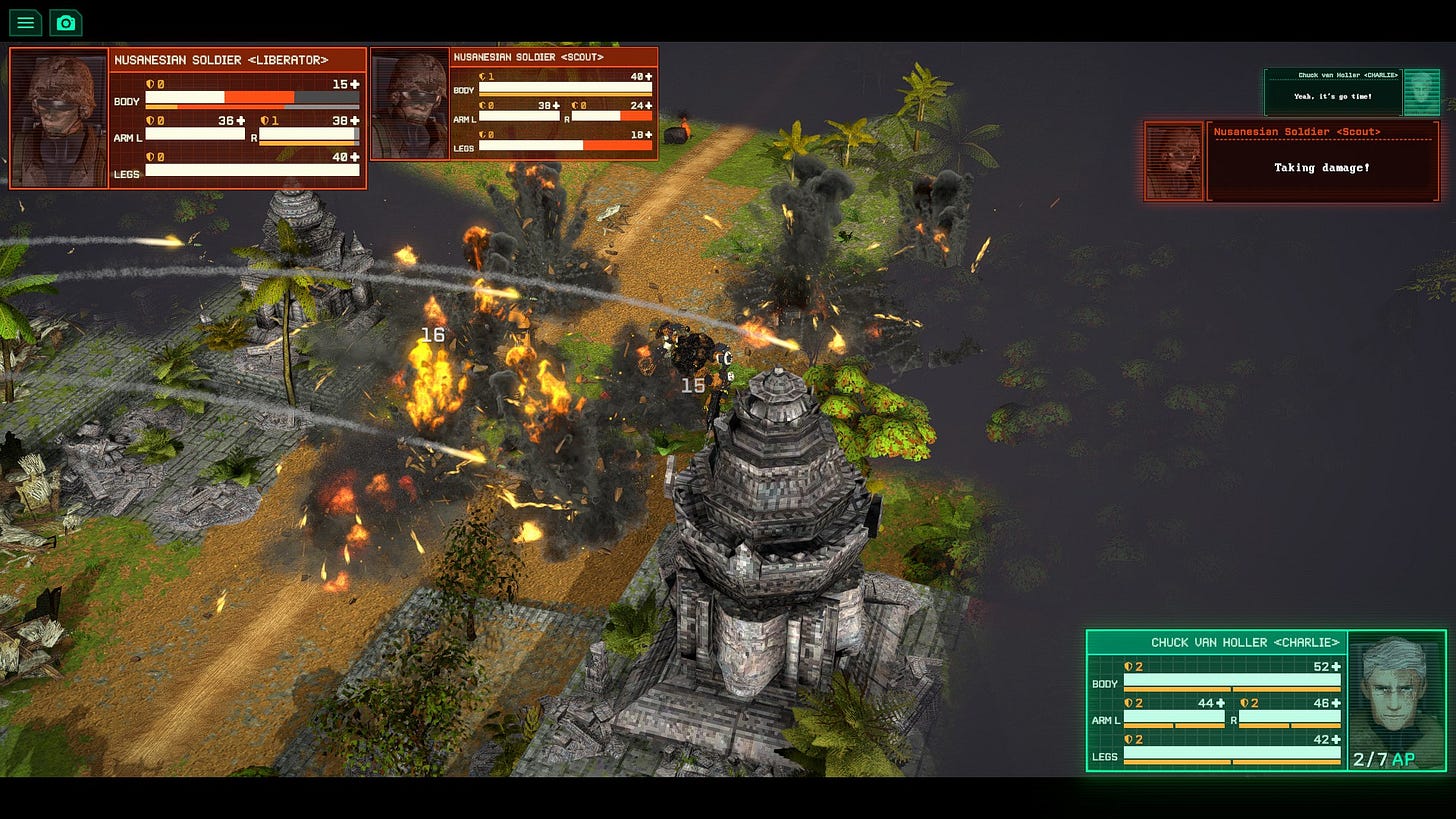In Kriegsfront Tactics, Front Mission and XCOM have a baby
Dive into Kriegsfront Tactics: A mix of retro mech action and strategy that's quirky, fun, and a tad rough around the edges. Preview inside!
I’m absolutely infatuated with mechs and turn-based combat. So of course, I’m also a big fan of Front Mission.
When I stumbled into the Kriegsfront Tactics store page on Steam last year, I knew I just had to put it in my wish list. Even today, its release date is a vague “to be announced,” but given the size of my games backlog, this thankfully isn’t a big deal.
The game is billed as a “procedural turn-based mecha tactics RPG” set in an alternative 1970s Southeast Asia, a time marked by certain conflicts. Given Toge Productions' roots in Indonesia, this setting subtly nods to specific episodes of unrest that impacted the region during that era.
Being from the Philippines, a neighboring country, and born during that period, I find this context particularly resonant. It brings a layer of authenticity and familiarity to the game's setting for me.
Kriegsfront Tactics also draws clear parallels with Front Mission: stepping into the boots of an unnamed mecha squad commander, tasked with leading their team behind enemy lines. This narrative setup is potentially brimming with intrigue, strategy, and blowing up enemy mechs.
Toge Productions, known for crafting niche PC experiences like Coffee Talk and its sequel, A Space for the Unbound, and Rising Hell, is venturing into new territory with Kriegsfront Tactics. This marks the indie studio’s leap into the realm of 3D mecha combat, and I, for one, am stoked to see how deep this rabbit hole goes.
Just a quick disclaimer before we dive in: Kriegsfront Tactics is still in development, and my observations are based on its demo. It's important to keep in mind that some of the issues I highlight might not be present when it’s officially released.
Visual style and performance
Kriegsfront Tactics opts for a visual aesthetic that’s a nod to the past, employing blocky and pixelated 3D visuals that hark back to the era of low-polygon, retro PS1 games. As a modern title, its design choice doesn't come with the graphical warping often associated with that generation's hardware limitations, resulting in a pleasing blend of old and new.
The mechs themselves, despite the retro visual approach, are anything but dated in terms of design. They have varied looks – slender, bulky, four-legged, headless – I see a fair selection in my squad alone. Enemies have even more types.
But when it comes to performance, there’s certainly room for improvement. Activating FSR (FidelityFX Super Resolution) — which, oddly, doesn't specify its version — on my Ryzen 5 3600 + GTX 1660 Super setup yields a modest framerate of 68-74fps.
Without FSR, the game struggles to maintain 60fps, a surprise given its PS1-inspired visuals. Understanding that games in development aren’t fully optimized, it still seems there’s a need for further performance tweaking by the developers to ensure a smoother experience.
How Kriegsfront Tactics plays
The game melds elements from both XCOM (specifically the Firaxis games, rather than the original by MicroProse) and Front Mission. It adopts a grid-based movement system akin to Front Mission, complete with levels that feature varying elevations.
The strategic advantage of the high ground, however, remains a bit ambiguous to me. While securing elevated positions offers some expanded visibility, the specific benefits for my units or disadvantages to the enemy aren’t clearly defined. It's a strategic layer I'm keen to see further developed.
Kriegsfront Tactics employs a detailed damage model for mechs, a staple in turn-based mech games. Critical components such as the torso, left arm, right arm, and legs each have their own health bar, initially shielded by armor. This armor gradually depletes as units come under attack. Once the armor on a component is exhausted, that part begins to sustain damage directly.
One aspect I particularly liked is the visual representation of action points (APs), depicted as arrows under the action bar in the middle of the screen. This system lights up to show potential AP consumption as I hover over different squares. It's an intuitive feature that helped me plan moves while managing that unit’s AP.
Friendly fire adds another layer of complexity to the battlefield. I discovered its consequences first-hand during a battle where I placed two shorter-range mechs next to each other. While I was careful not to fire at my ally, I wasn't as cautious during counterattacks.
A misjudged command led to one mech inadvertently blowing up its comrade—a harsh but valuable lesson in the importance of spatial awareness, my lack of it, and the unforgiving nature of friendly fire in combat.
The demo showcases two missions, each with its own set of challenges:
The first mission tasked me with eliminating six targets using a squad of four. Despite the straightforward objective, my initial lack of caution led to a squad member's demise.
The second mission ramps up the difficulty, presenting nine targets using the same four-person team, amid seemingly denser vegetation. The setup complicates visibility; despite being more careful, I had difficulty keeping all my mechs functioning throughout the mission.
Controlling mecha – Interface insights
The control scheme in Kriegsfront Tactics could benefit from some refinement as certain aspects currently feel unintuitive.
For example, adjusting the overwatch cone took me a bit of guesswork and a couple of attempts – a stark contrast to similar games where simply moving the mouse and clicking designates focus.
In this game, when a unit enters overwatch, the surrounding squares illuminate but their purpose wasn’t clear to me right away. It turns out, clicking one of these squares sets the direction for the mech's overwatch cone. This issue also arises at the end of a unit's turn, leading to instances where units aren't facing the intended direction. While not a major issue, it initially distracted me.
Camera control in Kriegsfront Tactics is reminiscent of XCOM, featuring fixed angles that can be adjusted with the Q and E keys for horizontal movement and T or G for vertical adjustments. Additionally, holding down the mouse scroll wheel allows for free camera movement, breaking away from the fixed angles as long as it's held down.
While such a setup functions adequately, the broader issue of non-customizable controls across the demo poses a noticeable limitation, affecting more than just camera movement.
The game also comes with controller support, explicitly mentioning compatibility with Xbox controllers on its Steam page. However, the extent of support for other controllers remains ambiguous.
My attempt to use a DualShock 4 met with mixed results; the game recognized the controller, but on-screen prompts continued to display PC controls—except in photo mode. There, controller inputs were acknowledged, yet the UI showed LB/RB and LT/RT indicators, aligning more with Xbox controller terminology than PlayStation's layout. Additionally, this mode uncovered a UI overlap issue, apparent only when a controller was connected.

Furthermore, while switching between units and adjusting the camera with the directional pad is easy enough, the controller lacks the ability to zoom in or out. The right analog stick repositions the camera on the battlefield, but without the ability to move the cursor independently, the controller's utility is limited.
Worse still, the functions of buttons such as Square, Triangle, LT, or RT remained a mystery during my playthrough.
Additionally, the demo lacks an option to save progress mid-mission. I’m uncertain whether this feature will be included in the final game.
Mecha 4D chess: Combat and strategy
Kriegsfront Tactics incorporates a line-of-sight mechanic similar to other strategy games, which were crucial in both demo missions.
The levels are densely populated with foliage, which considerably limit visibility. Yet, the game cleverly uses environmental cues, such as rustling trees, to hint at enemy positions.
The game introduces a rather different approach to calculating hit chances: Instead of showing the probability of my unit hitting the target, it displays the enemy's chance to evade my attack. This inversion of traditional hit chance mechanics leaves me wondering about the underlying math. This seems similar to how XCOM or Front Mission handles to-hit chance, except perhaps Kriegsfront Tactics shows the numbers in reverse.
But after multiple playthroughs, the nuances of counter-attacks and evasion are still unclear to me. I’m quite certain that a unit can't counter-attack or evade when flanked, but there are times where enemies evade or counter more than once in a single turn, possibly linked to their remaining action points. This complexity suggests that the game's current demo doesn't fully clarify these mechanics, leaving room for better explanation.
The influence of XCOM is evident in several areas, notably in the cinematic camera that zooms in during mech battles, and this adds to the drama of each encounter. The interface bar is reminiscent of XCOM's design, listing each unit's abilities—such as snap shot, reload, and overwatch—alongside the action points each requires.
When an enemy enters a unit’s line of sight, a skull representing the enemy is shown above the abilities bar. I can click between these skulls to choose which enemies to attack, or I can simply press Tab to cycle between them. Like XCOM, the skull symbolizing line of sight turns red-orange when the enemy is flanked, which means I'm doing something correctly!
There's also a nod to Phoenix Point's precision targeting; using certain abilities, I can manually aim at specific mech parts for tactical advantages.
The sound and fury of battle
Kriegsfront Tactics' environmental destruction adds a dynamic layer to its gameplay, not just in aesthetics but in its tactical implications. The game's mechanics organically lead to the demolition of trees and temples as collateral damage during combat.
This devastation removes potential cover, making both enemies and player units more visible and vulnerable. Such outcomes add a dynamic and strategic depth to engagements, where shooting at enemies also results in changing the battlefield's layout.
Essentially, as the battle progresses, so does visibility and tactics for both sides.
For instance, if I see suspicious movement in the trees, I can bombard the area with rockets. This opens up a stretch of land while inflicting heavy damage on two sneaky enemy mechs. At the same time, I lose the option to hide in the vegetation, and this makes my troops more easily seen and susceptible to retaliation.
While I understand that this is only a demo and the game remains a work in progress, the sound design, particularly the background music, really needs more variety. The current guitar-driven track, though initially appealing, quickly becomes repetitive due to its limited looping sequence across the demo's levels.
Make no mistake, the riffs are pretty good, easily prominent, and cut aurally through the explosions. Right now, however, it seems I'm hearing the same few chords played together more frequently than the rest of the track. This repetition starkly contrasts with the catchy-but-varied blues tune during the demo’s intro screen.
A greater variety in level music would enrich Kriegsfront Tactics’ auditory experience and prevent the repetition from overshadowing the engrossing gameplay.
Just to reiterate: The game is a work in progress. The issues highlighted here might not be present when the game officially comes out.
Miscellaneous observations
My time with the Kriegsfront Tactics demo revealed a project that's shaping up nicely, with only a few minor hiccups encountered.
One funny glitch involved an enemy unit's arm. After a successful hit that dismembered the limb, it bizarrely floated in the air, sniper rifle and all, even as the unit moved away.
The game's interface, especially when displaying numerical data and ability effects, can sometimes be perplexing. For instance, while the double tap ability's -25% accuracy penalty is straightforward, the additional details provided in the tooltip are where clarity diminishes.
Specifically, accompanying the double tap description are symbols and text that leave room for interpretation: one icon resembling an explosion is followed by “4 x 12 HIT x 2”, and another resembling a broken shield accompanies “5% x 12 HIT”. These elements, while intended to convey additional details about the ability's effects, instead make it more confusing due to their lack of intuitive explanation.
I'm optimistic that future tutorials or enhanced tooltips with more understandable explanations could easily resolve this confusion, making these strategic elements more accessible.
A pleasant surprise was the inclusion of a photo mode, which is growing increasingly common in modern games. While it offers standard fare like camera adjustments and color tuning, some functionalities didn't respond to my tinkering, such as focus strength and tint hue adjustments.
Despite these small quirks, the photo mode shines with its ability to alter environmental settings dramatically. Playing with options like "clear morning" or "rainy dusk" presets, along with real-time adjustments to the time of day, allows for creative freedom in capturing the game's moments.
This level of control can transform a simple screenshot into a moody, atmospheric scene, adding a layer of artistic expression to the experience.
Final thoughts
My anticipation for Kriegsfront Tactics has only grown after spending time with the demo. Despite its current imperfections, the game already hits a sweet spot with its challenge level and has charmed me with its low-polygon, retro PS1 aesthetic.
Kriegsfront Tactics has been on my Steam wish list since last year, and I'm genuinely thrilled to see the final version. However, I'm in no hurry for Toge Productions to rush the process. I'd much rather they take their time to polish every aspect of the game until it truly shines.
Given its potential, Kriegsfront Tactics stands on the verge of becoming yet another standout strategy title, provided it receives the care and attention it deserves for the developers to fully realize their vision.

